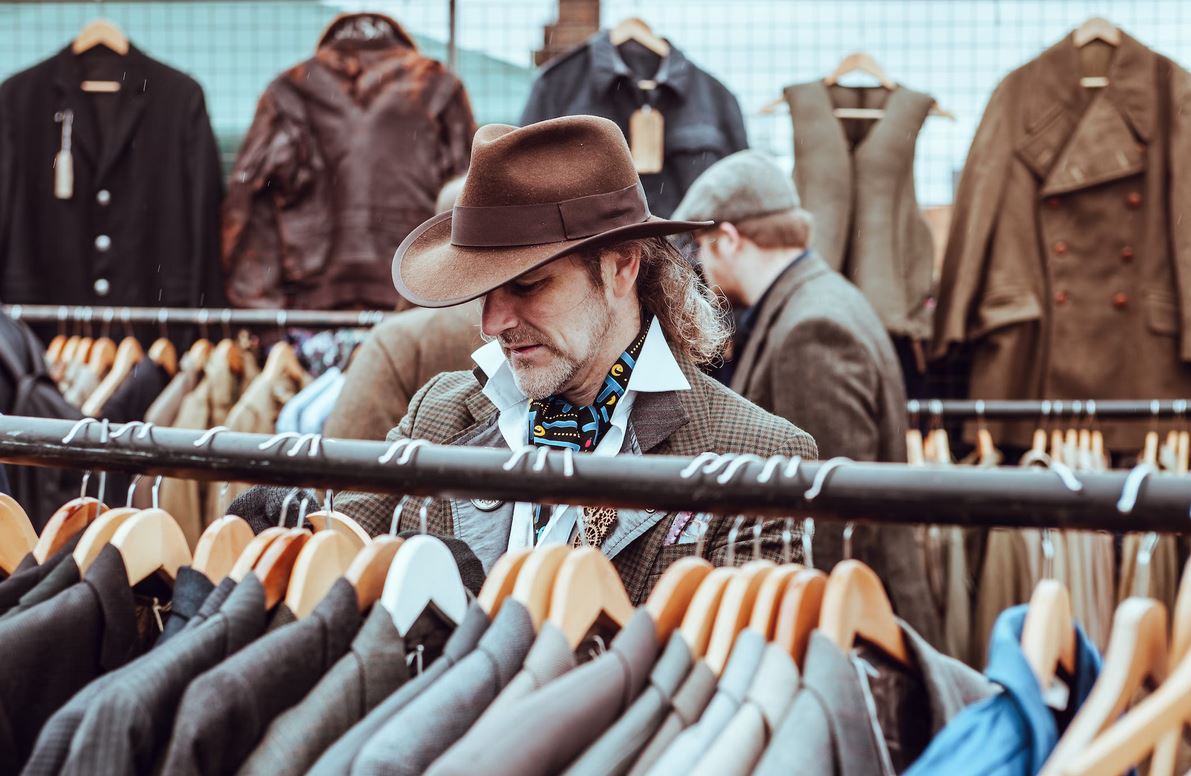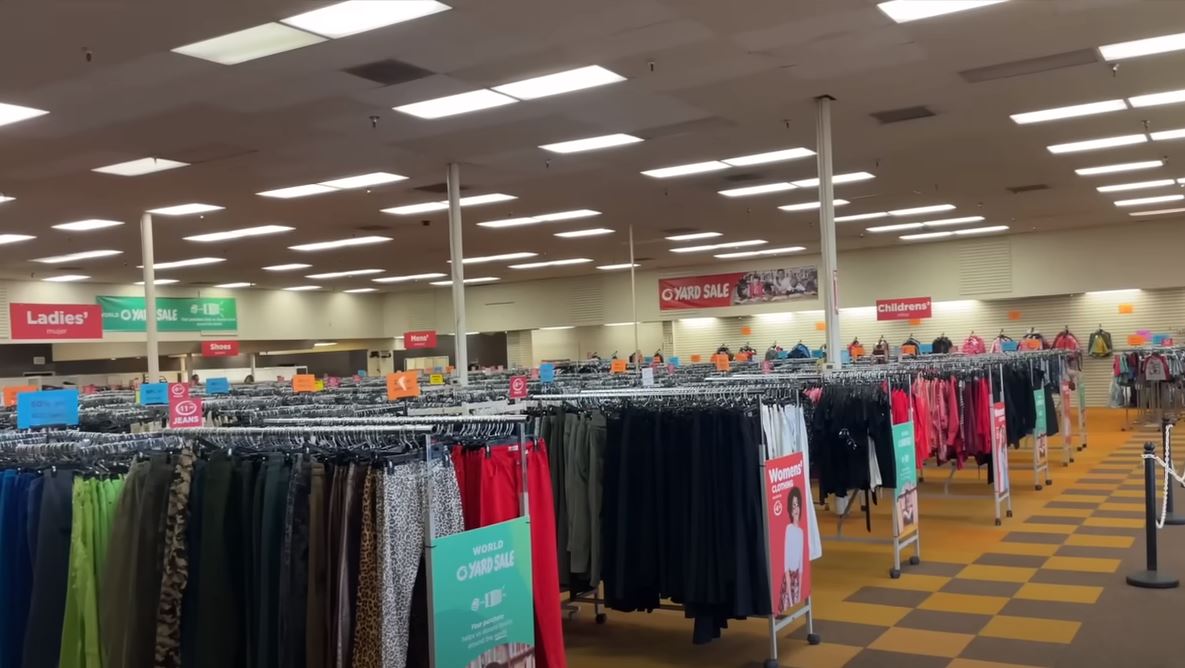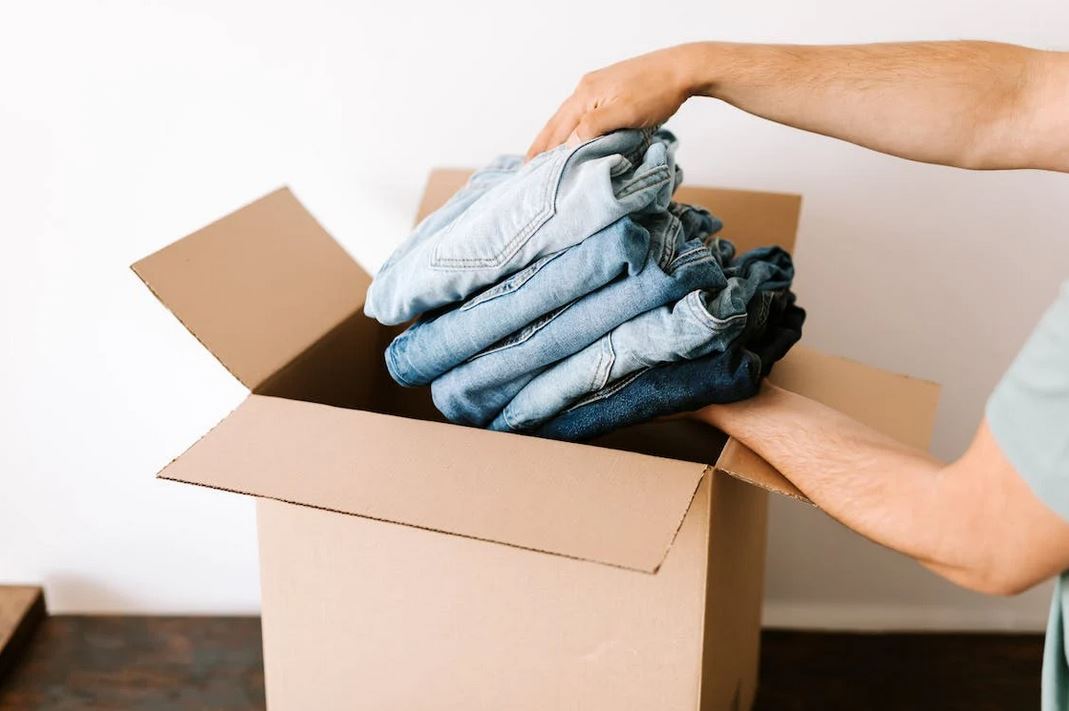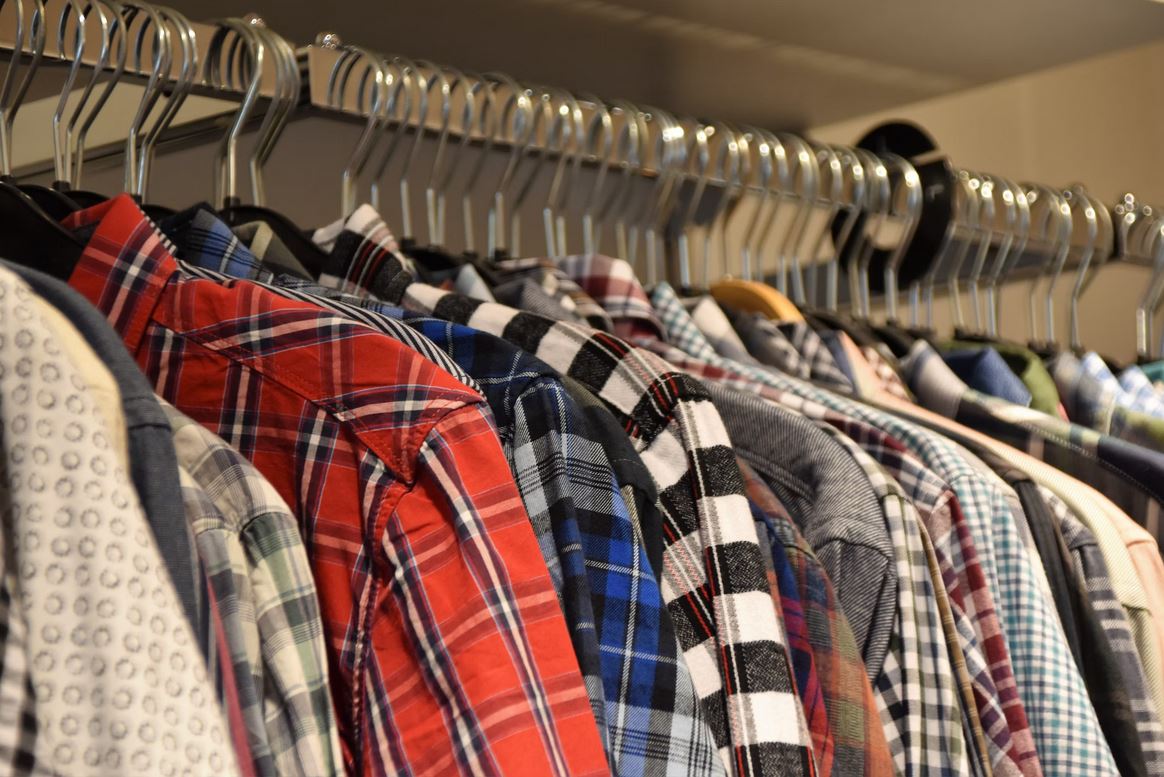What Is A Consignment Shop? An In-Depth Guide on 8 Key Things to Know!
Have you ever wondered what exactly a consignment shop is and how it differs from a thrift store? Been curious about the ins and outs of consigning your used goods? Or want tips to master shopping at secondhand boutiques?
Well, you’ve struck gold! Today, I’m dedicating this post to answering the question: “What is a consignment shop?”, how it differs from a thrift store as well as many essential things you need to understand.
In this comprehensive guide, we’ll cover everything you need to know about consignment shops including:
- A deep dive into how consignment stores work
- The wide range of pre-loved products they sell
- Key differences vs thrift stores
- Insider tips for scoring deals while shopping
- Maximizing profits when consigning your items
- And whether you should open your own consignment shop!
By the end, you’ll be a consignment pro ready to thrift shop like a VIP. Let’s get started!
Key Takeaways
Here are your key points to take from this article in the world of consignment shops!
- Consignment shops sell pre-owned goods on behalf of customers, splitting sales profits when items sell
- Typical merchandise includes apparel, accessories, furniture, and homewares in good condition
- Consignment stores differ from thrifts primarily in being selective for-profit businesses vs. charitable operations.
- Check original price tags, haggle politely, and visit frequently to unlock the best consignment deals
- Clarify terms, clean and press goods, and time drop-offs strategically to maximize the consigning payout
- Consider startup costs, regulations, location, marketing, and inventory when opening a consignment boutique
What Is a Consignment Shop? What You Need to Know
1. Demystifying How Consignment Shops Operate
Wondering what the inner workings of a consignment store look like? Well, brace yourself for a peek behind the curtain!
Unlike thrift stores that accept donated merchandise, consignment shops take in gently used goods from customers (known as consignors) and sell them on the owner’s behalf. It’s a retail store selling pre-owned products on consignment for individuals seeking to declutter for cash.
When an item sells, the consignment shop splits the profit with the original consignor per the terms of their consignment agreement. Here’s a play-by-play of the typical process:
- Step 1) Sally has a closet overflowing with designer dresses she never wears. She sees a Facebook ad for the new consignment shop Plato’s Closet opening downtown.
- Step 2) Sally gathers up 20 dresses in pristine condition to bring into Plato’s Closet. She steams them, checks for stains, and drives them to the boutique.
- Step 3) Chloe, owner of Plato’s Closet, inspects the dresses and accepts 18 of the 20. She declines two that are slightly worn.
- Step 4) For the accepted items, Sally and Chloe sign a consignment agreement outlining their split of profits, duration, discount policy, etc. Common terms are 60/40 split with 60% to the consignment shop.
- Step 5) Sally leaves her dresses at the shop. Chloe photographs them, prices them based on comparable retail value, and neatly merchandises them in the store.
- Step 6) Over the next month, 11 of Sally’s dresses sell, generating $550 in total sales. Per their agreement, Plato’s Closet takes 60% commission or $330.
- Step 7) At the end of the consignment period, Sally returns to collect her 7 unsold dresses. Plato’s Closet issues her a check for her 40% profit share or $220 for the dresses they sold on her behalf.
Voila! A peek behind the curtain of the inner workings of a consignment store. Now that you understand the basic steps, let’s unpack some of the nuances:
- Consignment shops are often more selective than thrift stores, vetting the brands, styles, and condition levels they accept
- Consignors retain ownership of their goods until sold. Items aren’t donated like at thrift stores.
- The agreement outlines commission split, duration, and discount policy – typically 40-60% to the shop.
- Duration is often 60-90 days. Shorter cycles help items sell before styles become dated.
- Consignors return to collect any unsold pieces at the end of the term.
Hopefully, this breakdown gives you clarity about the consignment process! Now let’s look at what kinds of pre-loved products you can find and sell at consignment shops.
2. A World of Pre-Loved Products Sold at Consignment Shops
The majority of merchandise at consignment shops falls into the category of apparel and accessories:
- Clothing – blouses, pants, skirts, dresses, coats, swimwear
- Shoes – heels, boots, sandals, sneakers of all designs
- Handbags – purses, shoulder bags, totes, clutches
- Accessories – belts, scarves, hats, fine jewelry
However, many consignment stores also carry selections of:
- Home furnishings – couches, chairs, tables, dressers, rugs, curtains
- Home decor – vases, wall art, mirrors, pillows
- Children’s items – toys, books, baby clothes, strollers, cribs
- Collectibles – vintage photos, memorabilia, artwork
Certain consignment shops specialize in particular categories like:
- Designer dresses and handbags
- Antique furnishings and decor
- Maternity clothes and baby gear
- Musical instruments like guitars and keyboards
- Sports equipment – skis, tennis rackets, golf clubs
In general, though, the focus remains on women’s, men’s, and children’s clothing, shoes, and accessories. Brands often include higher-end fare like Gucci, Prada, and Anthropologie, which sell for 50-90% off retail.
For shoppers, consignment shops offer deals on quality brands in excellent condition. For consignors, they provide a convenient way to declutter and earn cash. It’s a win-win!
Now that we’ve got a handle on the wide range of pre-loved products to discover, let’s compare consignment stores to thrift stores.
3. Consignment Shops vs Thrift Stores – Key Differences
At first glance, consignment stores and thrift shops may seem very similar – both offer secondhand wares at discounted prices. But several key differences set them apart:
Business Model
- Thrift stores are typically non-profit organizations that fundraise for charitable causes and missions.
- Consignment shops are for-profit businesses owned by individuals, families, or small investors.
Inventory Sourcing
- Thrift store inventory is 100% donated by individuals contributing goods they no longer want.
- Consignment shops source goods from consignors who retain ownership in items until sold.
Selectivity
- Thrift stores accept virtually any donated items in any condition – torn, stained, broken, etc.
- Consignment stores are selective, vetting the brands, styles, and condition levels they accept for resale.
Pricing
- Thrift store prices tend to be ultra-low given their charitable mission and volume of random inventory.
- Prices at consignment shops tend to be higher than at thrifts since goods are often name brands in excellent condition.
Organization
- Thrift stores require more rummaging through piles of randomly grouped wares.
- Consignment shops organize neatly by size, category, and style for easier browsing.
While thrift stores offer unbeatable deals, consignment provides a more refined, curated selection of secondhand fashions and home goods. Both are great options for saving money and shopping sustainably.
Now that you understand the core differences between these two types of secondhand retailers, let’s go over some tips and tricks for shopping at consignment stores.
4. Expert Tips for Saving Big at Consignment Shops
Here are some insider tips to help you master the art of consignment shopping:
Scope Out Original Price Tags
Often items will still have their original retail price tags attached – scrutinize these to spot coveted high-end brands and designs selling for steep discounts. Dolce & Gabbana dress marked down from $500 to $150? Score!
Don’t Be Shy to Negotiate
Haggle politely on price just as you would at yard sales or flea markets. Many shops will offer 10-15% off, especially to loyal frequent shoppers. Ask about any other discounts you may be eligible for.
Time Your Visits Strategically
Ask staff when they typically get new consignment inventory in – early weekday mornings are best to snag the newest designer bags and shoes before the #thrifting crowd snaps them up.
Stop by Frequently
Inventory turnover at consignment shops is extremely fast-paced. Those Christian Louboutin heels might be gone in a flash. Frequent visits mean you’re more likely to catch coveted items.
Follow on Social Media
Most consignment boutiques promote new arrivals, sales, and events on Instagram or Facebook. Following them can give you a leg up on scoring the best merchandise.
Inquire About Loyalty Perks
Some consignment shops offer special rewards like 10% off coupons or sneak peeks at new inventory for their most loyal and frequent customers. Doesn’t hurt to ask!
With this cheat sheet of money-saving strategies, you can shop smart and land some major fashion and home decor steals at the consignment shops in your area. Happy thrifting!
Next, if you’re interested in consigning your own pre-loved pieces for cash, here are some key questions to ask potential consignment partners:
5. Key Questions to Ask When Consigning Your Items
Intrigued to try your hand at consigning your own outgrown clothes or household wares? Here are the top questions experts recommend discussing with consignment shop owners:
What Brands and Categories Do You Accept?
Some boutiques specialize in contemporary designers, vintage fashions, mid-century furniture, etc. Seek out a shop whose focus aligns well with the items you’re looking to sell.
What Are Your Condition Criteria?
Reputable shops will only accept pieces in a “gently used” shape – no stains, tears, broken zippers, or other damage. Understand their condition standards upfront.
What Are Your Consignment Agreement Terms?
Areas to discuss: typical consignment period length (often 60-90 days), profit split percentage, discounts on unsold items, payment processing, etc. Get clarity.
When Does New Inventory Arrive?
Ask what days new consignment items hit the floor. You may want to time bringing items around peak days when foot traffic is higher.
Do You Have An Online Consignment Presence?
Some shops sell consigned fashions and goods through their own website or third-party sites like Poshmark to expand their reach. Good to know!
Doing your homework on these key details will ensure a smooth, seamless consigning arrangement for both you and the consignment shop.
Ready to get consigning? Here are step-by-step instructions.
6. A Step-By-Step Guide to Selling Your Stuff Through Consignment
Once you’ve found a promising consignment store partner, here’s the play-by-play for selling your used wares through their boutique:
Step 1: Gather Items in Good Condition
Comb through your closets, attic, and basement for clothing, shoes, accessories, and home goods in gently used shape – no stains, rips, or flaws. Edit ruthlessly! Consignment shops are picky.
Step 2: Review Shop Guidelines
Before making the trip, review the store’s website and social media for accepted brands, categories, and any condition specifications. This avoids hauling rejects.
Step 3: Bring Selections into the Store
Transport your curated pieces into the shop along with any special details on the origins, materials, and age of items that may increase value.
Step 4: Accept or Decline Their Offers
The sales staff will thoroughly inspect each item and make reasonable offers based on their resale value condition. You can decline any you’re unsatisfied with.
Step 5: Sign the Consignment Agreement
Once you’ve agreed on items and pricing, sign the boutique’s consignment agreement outlining split terms, duration, discount policy, etc for your records.
Step 6: Return to Collect Unsold Pieces
Come back once your contract term ends (typically 60-90 days) to collect any pieces that didn’t sell. Some shops will donate unsold items.
Step 7: Get Paid!
Expect to receive your portion of the sales profits for anything sold monthly or quarterly. Then sit back and await your consignment payout!
With these steps, you can easily declutter your life while earning cash by selling your pre-loved items through local consignment shops. It’s a win-win!
But wait, we have a few more professional tips to help you maximize your profits…
7. Expert Tips to Boost Your Consignment Payout
Want to maximize your split of the sales profits when consigning your goods? Pros recommend:
- Clean and press clothing – a quick pass of the steamer and lint roller makes pieces look crisp, and new, and sell faster.
- Note important details – tell staff about designer origins, materials (leather, silk, cashmere), and vintage eras to increase perceived value.
- Request shorter consignment terms – 30-60 days vs. 90 days reduces chances of styles becoming stale before selling.
- Consider accepting a lower split – if they sell faster by discounting with a 50/50 split, the quicker turnover may be worth it.
- Time drop-offs around peak weekends – bring items in during the busiest sale days for the shop when foot traffic is highest.
- Understand unsold item policies – some shops deeply discount items after a certain date, reducing your potential earnings, so clarify upfront.
With these insider strategies, you can simplify consigning while maximizing your profit payout!
For the savvy seller looking to declutter and earn, consignment shops make monetizing your unwanted wares a breeze. Speaking of savvy sellers, ever dreamed of opening your own consignment shop? Here’s what to consider before taking the plunge:
8. Key Considerations Before Opening a Consignment Shop
So you’re dreaming of opening up your own stylish boutique, stocked with the finest pre-loved fashions and decor? Make sure to weigh these factors first:
Crunching the Startup Costs
From lease deposits to inventory to marketing, launching a consignment store requires significant upfront capital. Thoroughly estimate and raise funds before diving in.
Brushing Up on Business Regulations
Research what business licenses, sales permits, zoning laws, and other red tape you’ll need to operate legally in your state and municipality.
Settling on a Product Focus
Determine what you’ll specialize in – women’s apparel, baby gear, luxury handbags, antiques. Carefully curating a niche is key for any consignment startup.
Scout the Ideal Location
Look for affordable retail spaces in high-foot-traffic areas with ample parking and accessibility. This significantly impacts success.
Spreading the Word
Marketing your unique boutique brand on social media, collaborations with local businesses, and events is a must. Build buzz!
Stocking Shop-Worthy Inventory
Having a breadth of quality consigned goods ready for opening day is vital. Be selective about what you accept.
Implementing Systems
Smooth day-to-day operations, inventory management, consignor payments, and agreements require thorough systems and tools.
Owning a specialized resale boutique can be tremendously rewarding. Just be sure to strategically plan every aspect of your shop from the ground up. Your success depends on it!
Final Remarks on Consignment Shops
And that’s a wrap! Let’s quickly recap everything we’ve covered in this comprehensive consignment shop guide:
- Consignment shops provide a convenient way for sellers to declutter and earn cash by selling pre-owned gems on consignment
- Savvy shoppers benefit from scoring quality, discounted goods across clothing, accessories, furniture, and more
- Maximize your consignment prowess by timing drop-offs strategically, negotiating prices, and pressing your wares
- Consignment satisfies the thrill of thrifting while offering curated, higher-end inventories than thrift stores
- With the right location, branding, and buzz, opening a specialized resale boutique can be tremendously rewarding
Hopefully you now feel like a consignment pro – ready to unlock the best deals while simplifying selling. Happy thrifting!
Frequently Asked Questions About Consignment Shops
What exactly is a consignment shop?
A consignment shop is a retail store that sells pre-owned goods on behalf of customers. When an item sells, the shop splits the profit with the original owner per their consignment agreement. Unlike thrift stores, consignment items remain owned by individuals rather than donated.
What kinds of items can you find at consignment shops?
Most merchandise falls into clothing, shoes, handbags, and accessories. But many shops also carry furniture, home decor, kids items, and specialty categories like designer wares, antiques, or musical instruments. Expect higher-end brands than thrift stores.
How do consignment stores price their items?
Pricing varies by item but consignment shops tend to price higher than thrifts – discounted off original retail value based on condition. Designer goods see the steepest markdowns, often 50-90% off retail. Check tags for original prices.
What are the benefits of shopping at consignment stores?
You can score quality, gently used brand name goods for steep discounts. Consignment shops offer a more curated, elevated selection than thrifts. For savvy shoppers, it’s an affordable way to access coveted brands and unique vintage finds.
What do you need to know before consigning your items?
Ask about accepted brands, consignment terms, split percentages, and item condition requirements. Understand when you’ll be paid for sold items. Research tips to maximize your payout when consigning goods.
How often does inventory change at consignment shops?
Inventory turnover is extremely quick – new consigned gems arrive daily while shopper purchases happen rapidly. Check shops frequently for new arrivals. Also ask when they get large batches of new consignment items.
Should I haggle on prices at a consignment boutique?
Polite haggling is common. Many shops offer 10-15% off, especially for frequent shoppers. Discounts are more likely towards end of consignment terms when items haven’t sold. Ask about any other specials or loyalty perks.
What should I consider before opening my own consignment shop?
Research startup costs, business regulations, ideal locations, niche focus, marketing strategies, sourcing quality inventory, implementing systems, and creating the right boutique ambience. Location and curating specialty merchandise are especially key.
editor's pick
latest video
Want Tips, Guides on Thrifting?
Subscribe to our newsletter today and get custom thrifting tips, and guides!
You can opt-out anytime.




